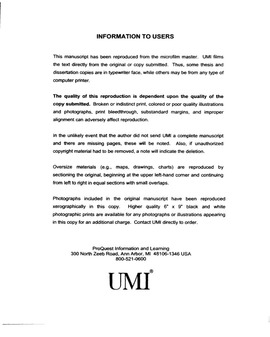| dc.contributor.advisor | Suflita, Joseph, | en_US |
| dc.contributor.author | Ulrich, Glenn Allen. | en_US |
| dc.date.accessioned | 2013-08-16T12:18:28Z | |
| dc.date.available | 2013-08-16T12:18:28Z | |
| dc.date.issued | 1999 | en_US |
| dc.identifier.uri | https://hdl.handle.net/11244/412 | |
| dc.description.abstract | I believe that the ubiquity and importance of sulfate reduction in subsurface environments is a reflection of the diversity of the hydrological and biogeochemical processes which contribute to the availability of sulfate. Iron reduction and nitrate reduction were of minor importance in the aquifers studied herein due to the decreased availability of nitrate and microbially reducible ferric iron. | en_US |
| dc.description.abstract | Chapter one describes a relatively simple trapping procedure for measuring sulfate reduction activity and the accumulation of inorganic sulfides in sedimentary environments. The technique yielded results comparable to a traditional and extremely time consuming method. The versatility and reliability of the simplified method has been verified in a wide variety of samples by several independent research groups. Chapter two describes a direct imaging procedure which was developed in order to obtain interpretationally unambiguous information on the spatial distribution of sulfate-reducing activity in subsurface sediment cores. Experiments in which the method was tested indicated that sulfate-reducing activity and the movement of sulfate-reducing bacteria is influenced by small scale (mm) heterogeneities in sediment structure. | en_US |
| dc.description.abstract | The research presented in chapters 3,4, and 5, indicates that the cycling of sulfur is an important biogeochemical processes that impacts the shallow groundwaters of the Yegua formation in East Central Texas. The oxidation of pyrite reserves in shallow aquifers produces acidic groundwaters rich in sulfate and reduced iron. This process in conjunction with the transport of sulfate in groundwaters represents a major source of the electron acceptor in sandy formations. Sulfate reduction was highly spatially variable and was detected only in sand intervals. Narrow zones of increased activity were detected in sands adjacent to lignite and clay-rich laminae. The fermentation of organic matter in the latter formations produced organic acids (mainly acetate) which likely supported sulfate reduction in the neighboring sandy regions. | en_US |
| dc.description.abstract | Interests in the microbiology of subsurface environments continues to grow due to the realization that microbial activities influence a large portion of the Earth's crust by contributing to the biogeochemical cycling of the elements. It is likely that only a fraction of the relations between microbial activities and geochemical phenomena have been identified. It is equally important to obtain an understanding of how microbial activities are regulated in the subsurface, so that these processes can be exploited for bioremedial and biotechnological purposes. The primary focus of this dissertation was to gain an increased understanding of the factors governing anaerobic processes, mainly sulfate reduction, in pristine and contaminated aquifers. A combined microbiological and geochemical approach was used in an effort to evaluate in-situ microbial processes rather than potential activities as indicated by more traditional methodologies. | en_US |
| dc.description.abstract | The factors limiting sulfate reduction in a landfill leachate-contaminated aquifer were addressed in chapter 6. Increased sulfate reduction rates were noted in intervals which contained higher sulfate concentrations, and laboratory experiments confirmed this observation. The sources of sulfate that likely impacted intrinsic biodegradation activity in the aquifer included, barite dissolution, iron sulfide oxidation near the water table, and the advective flux of sulfate from upgradient regions. | en_US |
| dc.format.extent | xii, 163 leaves : | en_US |
| dc.subject | Biodegradation. | en_US |
| dc.subject | Biogeochemistry. | en_US |
| dc.subject | Anaerobic bacteria. | en_US |
| dc.subject | Biology, Microbiology. | en_US |
| dc.subject | Biogeochemical cycles. | en_US |
| dc.subject | Biology, Ecology. | en_US |
| dc.subject | Sulfates | en_US |
| dc.subject | Groundwater Pollution. | en_US |
| dc.title | The ecology and biogeochemistry of sulfate reduction in the terrestrial subsurface. | en_US |
| dc.type | Thesis | en_US |
| dc.thesis.degree | Ph.D. | en_US |
| dc.thesis.degreeDiscipline | Department of Microbiology and Plant Biology | en_US |
| dc.note | Major Professor: Joseph Suflita. | en_US |
| dc.note | Source: Dissertation Abstracts International, Volume: 62-12, Section: B, page: 5525. | en_US |
| ou.identifier | (UMI)AAI3038029 | en_US |
| ou.group | College of Arts and Sciences::Department of Microbiology and Plant Biology | |
